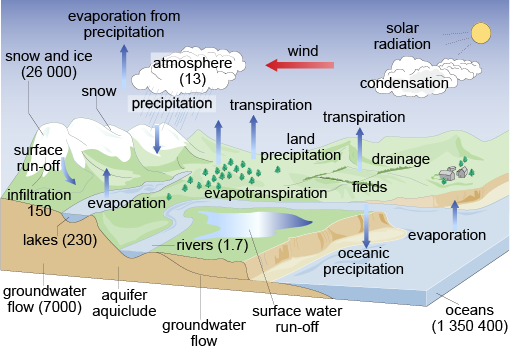1 The hydrological cycle
The hydrological cycle – the continuous cycling of water between land, open water surfaces and the sea, either directly or indirectly – is a complex process that has been known about for a long time (Figure 1). Probably the oldest reference to the hydrological cycle is found in the Chandogya, one of the principal Upanishads, which says ‘rivers … lead from sea to sea’. It reveals that as early as 1000 BCE, attempts were being made to interpret and explain recurrent phenomena on the basis of direct experience.
The identifiable mechanisms of the cycle are complicated not only by the characteristics of air–water–land interfaces across which the cycle operates, but also by climatic factors that vary in both time and space. The various operations and mechanisms within the cycle are illustrated in Figure 2.


